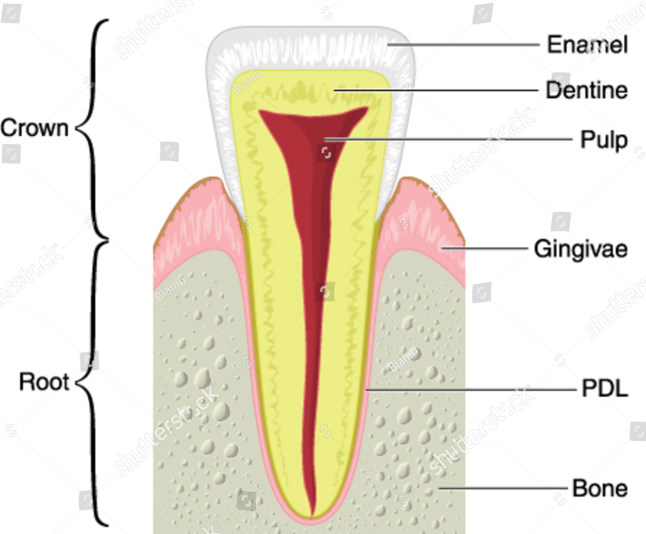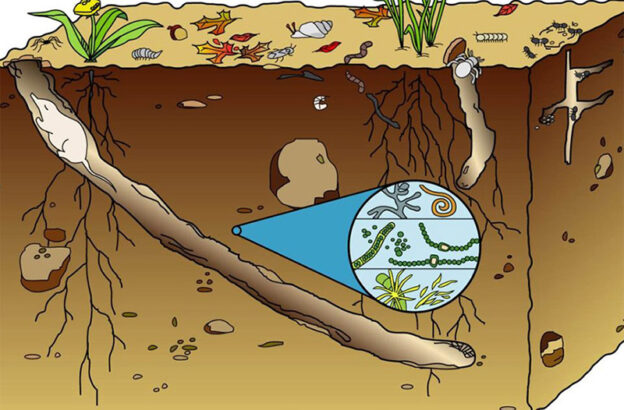LESSON 3
3.1 MAMMALIAN TEETH
Mammals have different types and shapes of teeth and they are thus termed Heterodonts. Those which have teeth of the same size and shapes are termed as Homodonts.
Teeth are embedded in the upper and lower jaws. In mammals teeth consist of an exposed portion known as a crown and a portion that is firmly fixed or anchored in a jaw bone called a root.
There are 4 types of teeth in mammals and these include;
- Incisors
These are the front teeth in both the upper and lower jaws in man. The crowns are chisel shaped (sharp flat edge) and have only one rot. Incisors are used for cutting food
Structure of an Incisor

- Canines
These are found next to the incisors and they are normally long and pointed. They are poorly developed in herbivores and very prominent in carnivores where they are used for holding and piercing food. They have a conical shaped crown which is sharp and pointed. They have one root.
They are used for tearing flesh. Structure of canine

- Premolars
These lie behind the canines on both jaws.
These have flat broad surfaces which are used for grinding food.
Premolars possess two or more cusps and ridges and have two roots.
Premolars are used for grinding and chewing food.
Structure of premolar

- Molars
They are absent in young mammals.
These have wider crowns with more ridges and cusps compared to premolars.
They may have three or more roots.
Molars are used for grinding and crashing food.
Structure of a molar

Note:
- Elephant tusks are
- Carnivores have a special type of teeth called the carnassial teeth which are adopted for cracking bones and scrapping (removing) of meat from bones.
3.3 Internal structure of mammalian tooth
Each tooth consists externally of a crown, Neck and root.
- Crown
This is a region of the tooth which projects above the gum; it is used for breaking down food.
- Neck
This is the junction between the crown and the root.
- Root
This is the region which lies embedded in the jaw bone. It cannot be seen and it anchors / fixes firmly the root into the jaw bone.

3.4 Functions of the parts of the tooth
- Crown; this break down food into small particles during chewing, grinding and cutting.
- Enamel; this strengthens the tooth to enable it grind and cut. It protects the dentine and pulp cavity. It is the hardest material in the body. It is white in colour and made up of calcium phosphate salts.
- Root; this fixes the tooth into the jaw.
- Dentine; this strengthens the tooth.
- Pulp cavity; this contains nerves that provide sensitivity to the tooth and blood vessels that transport food and oxygen to the tooth.
- Gum; this is fibrous which fixes or anchors the teeth firmly in the jaw. It is also called the gingiva.
- Cement; this is a thin layer of bone-like material that fixes the tooth in the jawbone.

